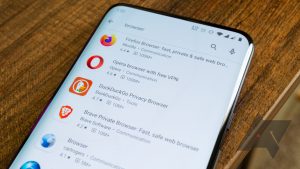If you a looking for the benefits of using Swift for iPhone app development, then you are in the right place. Until Swift entered the market, Objective-C was used to create an app, which was time-consuming and difficult. However, the advent of swift in the market brought countless benefits. Speed, security, user experience, and maintenance are a few examples.
Moreover, Swift has opened new doors for iPhone application development services by making the process more effective and efficient. These are just a few instances. There are more features and elements that make Swift a popular choice for any iPhone iOS app development expert. In this article, we’ll find out what those are, but before that, we’ll first analyze Swift in detail.
For your information, according to InformationWeek, Swift 2.0 is Apple’s main language used for programming OS X and iOS systems. And now, with new Apple products out in the marketplace now and then, enterprise app developers and commercial programmers alike are looking at how to move new Apple apps onto iOS platforms and its Mac OS X fast and easily.
Resource Reference: Android Development Experience Helpful Tips From 10 Years
Fortunately, as a novice or even professional app developer, there are already a bunch of tools, methods, and options that you can utilize to get there. But, if you want to do it the official Apple way you’re going to consider Swift (iPhone iOS + iPad iOS) in your strategic app development plan. Of course, to do it right, fasten your belts as we take you for a ride to learn more.
What Swift Programming Language Is All About
Swift is an advanced programming language developed in 2014 by Apple, all thanks to Steve Jobs (the brains behind its birth). The program is mainly used for iOS development, and most developers find it smarter than Objective-C. This is because it is safe, fast, intuitive, and as expressive and enjoyable as going on a long journey for developers to enjoy.
Swift was introduced at Apple’s Worldwide Developer Conference (WWDC) 2014 to replace Objective C — its long-time programming language. Precisely, at WWDC 2015, Swift 2.0 was announced with a number of improvements and changes. Including the main aim of Apple’s commitment to make Swift an open-source language.
It allows developers to write safer and more reliable code to create appealing, user-friendly, and successful iOS applications. Being advanced and more sophisticated than its counterparts, the program provides a high degree of interaction, eliminates potential threats, and works as the most terrific starting point for any iOS app development.
Resource Reference: How To Convert A Website Into An App With Or Without Software
Technically speaking, it’s still too soon to know precisely how the introduction of the open-source by Apple will affect Swift 2.0 in the future. But, the overall ability to use Swift for Linux (as promised by Apple) and, perhaps, Windows systems can’t hurt the language’s popularity. We are yet to discover much more along the way given the time as developers.
Additionally, Swift for iPhone app development also offers a unique package manager that developers can freely utilize. To enumerate, this is a single cross-platform tool for building, running, testing, and packaging your Swift libraries and executables. Perse, Swift packages are the best way to distribute libraries and source code to the Swift community.
To get started, you can Download Xcode For Free and learn how more (view resources) about how to build apps using Swift with documentation and sample code. What’s more, if you are looking for the Swift parallel scripting language, all you’ll need to do to get started is visit swift-lang-org to gather more useful details and resourceful information that you’ll need for free.
Swift For iPhone App Development Benefits (An In-Depth Analysis)
Most developers won’t find it easy to use Swift for iPhone app development, of course, But, Swift is quite a very powerful and intuitive programming language for iOS, iPadOS, macOS, tvOS, and watchOS. Writing Swift code is interactive and fun, the syntax is concise yet expressive, and Swift includes some of the topmost best modern features that many developers love.
Its configuration of packages is written in Swift itself, making it easy to configure targets, declare products and manage package dependencies. Swift packages can also include custom commands that help build your projects and provide additional tooling. Swift Package Manager itself is actually built with Swift and included in the Swift open-source project as a package.
Another safety feature is that by default Swift objects can never be nil. In fact, the Swift compiler will stop you from trying to make or use a nil object with a compile-time error. This makes writing code much cleaner and safer. Additionally, it also prevents a huge category of runtime crashes in your apps. However, there are cases where nil is valid and appropriate.
For these situations, Swift has an innovative feature known as optionals. Specifically, an optional may contain nil, but Swift syntax forces you to safely deal with it using the (?) syntax. In that case, so as to indicate to the compiler that you understand the behavior and you will handle it safely without any compromise. It also has other features for more expressive coding.
Some of these notable features are as follows:
- Generics that are powerful yet simple to use
- Protocol extensions that make writing generic code even easier
- First-class functions and a lightweight closure syntax
- Fast and concise iteration over a range or collection
- Structs that support methods, extensions, and protocols
- Enums can have payloads and support pattern matching
- Functional programming patterns, e.g., map and filter
- Built-in error handling using try/catch/throw features
- Tuples and multiple return values, and more…
So far, we can clearly state that Swift is a powerful programming language that is also easy to learn. With that in mind, below are some of the topmost useful benefits that make Swift for iPhone app development the best choice for many UX designers and UI developers. Have a look and then share with us what you think in our comments section thereafter.
1. A Modern App Builder
Technically, Swift is the result of the latest research on programming languages, combined with decades of experience building Apple platforms. Named parameters are expressed in a clean syntax that makes APIs in Swift even easier to read and maintain. Even better, you don’t even need to type semi-colons. Its inferred types make code cleaner and less prone to mistakes.
While, in the same fashion, its modules eliminate headers and provide namespaces. To best support international languages and emoji, Strings are Unicode-correct and use a UTF-8-based encoding to optimize performance for a wide variety of use cases. Automatically, its memory is seamlessly managed using tight, deterministic reference counting.
Whilst, keeping memory usage to a minimum without the overhead of garbage collection. In addition, what’s more, is that you can even write concurrent code with simple, built-in keywords. Something that helps define asynchronous behavior — this, as a result, makes your code more readable and less error-prone.
2. First Language, More Robust And Safer
As a great programming language of its kind, Swift can open doors to the world of coding. In fact, it was designed to be anyone’s first programming language, whether you’re still in school or exploring new career paths. For educators, Apple created its free curriculum to teach both in and out of the classroom. First-time coders can download Swift Playgrounds.
By definition, Swift Playgrounds is an app for iPad that makes getting started with Swift code interactive and fun. In today’s world, where data breaches of websites and apps are common, Swift provides robust security that fixes several flaws.
It makes it easier to compile and rectify problems caused when codes, both of which were lacking in Objective-C. It’s favorable for iOS app development since it is more dependable and stable, which may help you gain the confidence of more users.
3. Easy-To-Maintain
Easy to maintain is another key advantage of Swift over its counterparts. This is because it doesn’t have dependencies like Objective -C or other similar application platforms. Compared to Swift, Objective-C is managed in two different files while Swift uses one single program. This provides developers more time to plan out the app’s logic and enhance code quality.
So that, as a result, it runs smoothly. Furthermore, Swift eliminates the need to manually synchronize the method name and comment between files, which is one of the fundamental flaws associated with Objective-C. As a result, Swift lacks dependencies, making it easier to manage while designing iOS apps.
Swift eliminates entire classes of unsafe code. Variables are always initialized before use, arrays and integers are checked for overflow, memory is automatically managed, and enforcement of exclusive access to memory guards against many programming mistakes. The syntax is tuned to make it easy to define your intent — for example, simple three-character terms.
Remarkably, these keywords define a variable ( var ) or constant ( let ). And Swift heavily leverages value types, especially for commonly used types like Arrays and Dictionaries. This means, that when you make a copy of something with that type, you know it won’t be modified elsewhere.
4. Swifter Development
From its earliest conception, Swift was built to be fast. Using the incredibly high-performance LLVM compiler technology, Swift code is transformed into optimized machine code that gets the most out of modern hardware. The syntax and standard library have also been fined tuned to make the most obvious way to write your code and also perform the best.
Whether it runs in the watch on your wrist or across a cluster of servers, it’s indeed the perfect fit for any ambitious app developer. Its code co-exists alongside your existing Objective-C files in the same project, with full access to your Objective-C API, making it easy to adopt. As a matter of fact, Swift proved to be much faster than other programming languages.
More so, regarding the quicker app development status. The company Apple reveals that Swift programming language is 8.4 times quicker than Python 2.7 and 2.6 times faster than Objective-C. All these expert opinions and researches state that it’s arguably one of the fastest programming languages to choose over Objective-C for iPhone/iPad app development.
5. Much Easier To Understand
For your information, Swift is a successor to both the C and Objective-C languages. It includes low-level primitives such as types, flow control, and operators. It also provides object-oriented features such as classes, protocols, and generics, giving Cocoa and Cocoa Touch developers the performance and power they demand.
Markedly, since Swift is also available in plain English, it is much easier to understand and expressive. Even the non-coder can read and write the program. Moreover, Swift drops legacy conventions because there is no need for semicolons, end lines, or parenthesis, resulting in less enactment of code lines in Swift than in Objective-C.
Swift is one of the developers’ most preferred programming languages as the code is simpler and cleaner than C/ C++. Its code is safe by design and produces software that runs lightning-fast. You can create an entirely new application with Swift today, or begin using its code to implement new features and functionality in your app.
6. Interactive Coding
Interactive coding is another benefit of using Swift for iPhone app development. iOS developers may test a new algorithm in real-time using Swift Playground without needing to create the full app. This is frequently referred to as Read-Eval-Print-Loop (REPL) and is incredibly beneficial for quick prototyping, learning, and experimentation.
In addition, Apple has added inline code execution to Playground. This allows programmers to build tons of code and write algorithms while receiving feedback. This loop of feedback speeds up coding by substituting traditional programming with data visualizations in Playgrounds.
Iterative programming is a method. Any attempt to alleviate stress and enhance the creative process can help programmers be more productive. It can also free up their time to focus on bigger challenges rather than the tedious ones that traditional compilers impose on programmers.
7. Open-Source Community
Swift is developed in the open at Swift.org, with source code, a bug tracker, forums, and regular development builds available for everyone. This broad community of developers, both inside Apple as well as hundreds of outside contributors, work together to make Swift even more amazing. There is an even broader range of blogs, podcasts, conferences, and meetups.
A unified place where developers in the community share their experiences of how to realize the great potential of Swift. Keep in mind, when Apple declared Swift an open-source language in 2015, the popularity of this programming language surged highly — coz the language was made free to use for all developers. Since then Swift has become an open-source language.
Many iOS developers are using it on various platforms to fix bugs, provide new features, and more. Moreover, as developers help this programming language succeed, Apple can now get feedback from the community to make ongoing improvements.
8. Swift For Server + Playground Music
On one hand, while Swift powers many new apps on Apple platforms, it’s also being used for a new class of modern server applications. It is perfect for use in server apps that need runtime safety, compiled performance, and a small memory footprint. To steer in its direction of developing and deploying server apps, the community formed the Swift for Server workgroup.
The first product of this effort was SwiftNIO, a cross-platform asynchronous event-driven network application framework for high-performance protocol servers and clients. It serves as the foundation for building additional server-oriented tools and technologies, including logging, metrics, and database drivers which are all in active development.
On the other hand, another thing that makes Swift better than Objective-C is its playground feature which makes the iPhone app development process easy and exciting for developers. The newbie developer can quickly learn iOS app development on Swift without having in-depth knowledge of the Swift programming language. What else would you wish for?
Suffice it to say, its ‘Playground’ feature also allows developers to test the code without even building a whole app, which speeds up development and makes life easier for iOS developers. That said, to learn more about the open-source Swift community and the Swift Server work group, please feel free to visit Swift.org so that you can gather more useful resources.
9. Playgrounds And Read-Eval-Print-Loop (REPL)
Much like Swift Playgrounds for iPad, playgrounds in Xcode make writing Swift code incredibly simple and fun. Type a line of code and the result appears immediately. You can then Quick Look the result from the side of your code, or pin that result directly below the manager. The resulting view can display graphics, lists of results, or graphs of a value over time.
Open the Timeline Assistant to watch a complex view evolve and animate — great for experimenting with new UI code — or even play an animated SpriteKit scene as you code it. When you’ve perfected your code in the playground, you can simply move it.
Move that code into your project. It’s also interactive when you use it in the Terminal or within Xcode’s LLDB debugging console. Use Swift syntax to evaluate and interact with your running app, or write new code to see how it works in a script-like environment.
10. Cross-Platform + Dynamic Library Support
Swift already supports all Apple platforms and Linux, with community members actively working to port to even more platforms. With SourceKit-LSP, the community is also working to integrate Swift support into a wide variety of developer tools. We’re excited to see more ways in which Swift makes software safer and faster, while also making programming more fun.
Unlike Objective-C, Swift provides dynamic library support. These feasible bits of code help developers connect one version of the Swift app to different versions of the app. The function enables the communication between apps created using the most recent language releases and those made using earlier ones.
Simply said, it makes it easy for apps that are already developed for a specific Swift version to be upgraded to newer versions. Dynamic libraries are downloaded straight to the RAM. Considerably, reducing the initial app size and accelerating the app’s performance.
In Conclusion:
It’s, important to realize, that both Objective-C and Swift are the two main programming languages used for iOS app development. Though the launch of Swift changed it all, the internet is now flooded with ‘Swift vs. Objective-C.’ With all the benefits discussed above, including two times faster than Objective-C, Swift seems to be the clear choice for businesses.
Ultimately, Swift has the potential to develop a responsive, feature-rich, high-performing, and secure app. So, if you had ‘Why choose Swift for iOS app development?’ in your mind, you now know the answer, don’t you? Be that as it may, you can also have a look at the Best iOS App Development Tools that you should include in your inventory as well.
How much you should care about Swift highly depends on how much your plans involve applications for Apple platforms. If they are part of your plan, then you’ll want to know some facts about the language, and we’re here to help you each step of the way. And, the best bet is to go through all the above beneficial headlines first before you can engage with Swift.
Other More Related Resource References:
- Two-Factor Authentication (2FA) Apps Verification Tool
- Social Media App Development | Features & Technology Stack
- The Topmost 15 Marketing Automation Apps For Shopify Websites
- 10 React Developer Tools To Make Your Software Development Easy
- Modern Apps Development | 7 Best Practices For Novice Webmasters
- Node.js | How It Works Plus Its Key Uses In Web Apps Development
- Java | Its Real Programming Benefits & Uses In UX Designs
Just take a keen look at our facts about Swift herein and let us know what you think: Could Swift become one of the major languages used around the computer industry, or will it forever be tied to Apple? And if you’re currently using Swift we’d love to hear from you. What interesting facts did we miss? We’ll look forward to the discussion in the comments section below.
And if you’ll need more help, you can always Contact Us and let us know how we can come in handy. You are also welcome to share your additional thoughts, opinions, suggestions, recommendations, or even contribution questions (for FAQ Answers) in our comments section. And now, until the next one, thanks for taking the time to stop by and read this guideline.









